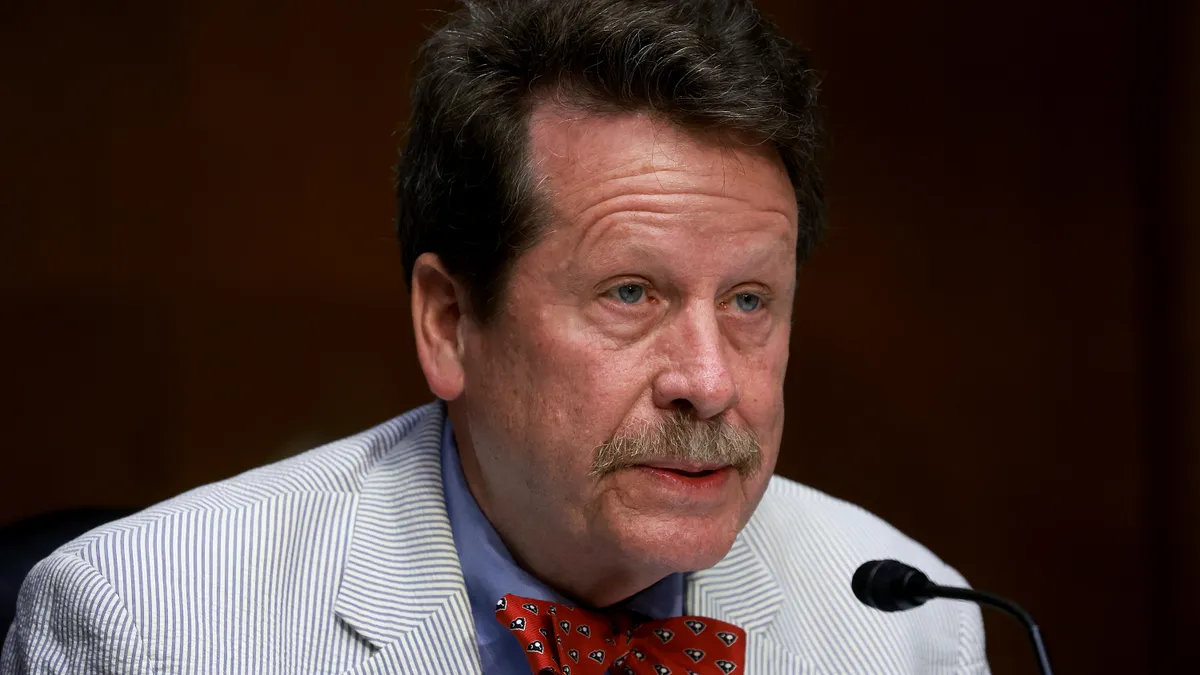Dive Brief:
- Food and Drug Administration Commissioner Robert Califf said Wednesday one of the agency’s top priorities is to finalize a rule that increases oversight of laboratory-developed tests, despite strong pushback from industry lobby groups and providers.
- Califf, who spoke at an event hosted by the Alliance for a Stronger FDA, said the proposed rule is “moving along in important ways.” The commissioner’s comments come shortly after leaders from the FDA’s Center for Devices and Radiological Health and the Centers for Medicare and Medicaid Services publicly defended the proposal and countered arguments against the rule.
- Califf also addressed questions during the event about the growing presence of artificial intelligence in healthcare, saying that while industry representatives and patients should have a role in the development of regulatory standards for the technology, the FDA should ultimately have the final say.
Dive Insight:
The FDA’s LDT proposed rule has been one of the most contentious pieces of healthcare regulation in the past several years, receiving thousands of comments during its public comment period. If finalized, the rule would increase the FDA’s oversight of the tests and regulate them similarly to other in vitro diagnostics.
Industry lobby groups, including the American Clinical Laboratory Association and American Hospital Association, have pushed back on the proposal. The ACLA claimed in its 107-page comment the rule would limit patient access to widely used tests and stifle innovation, also stating the group has “grave concerns with FDA’s Proposed Rule, both as a matter of public policy and as a matter of law, and urges FDA to withdraw it.”
While Califf did not call out any specific groups or criticisms during the Wednesday event, he did note there are “a lot of opinions” about the rule, before going on to back it.
“As a longtime practicing doc, I would like it if laboratory tests that were used in my patients had assurance that the operating characteristics of the test — that is how well they predict the outcome of interest — is known as opposed to being promised without the data backing it up,” Califf said.
Jeff Shuren, director of CDRH, and Dora Hughes, acting chief medical officer and acting director of the Center for Clinical Standards and Quality for the CMS, made a similar argument in a Jan. 18 joint statement. The officials wrote the changes outlined in the rule are necessary as CMS does not have the expertise to regulate the tests, and the proposal “would better assure the safety and effectiveness of LDTs and would remove a disincentive for non-laboratory manufacturers to develop novel tests.”
The final rule is scheduled for April. Eric Assaraf, a TD Cowen analyst, has questioned whether the agency would actually finalize the rule and told MedTech Dive in an email “I fully expect it to be challenged in court” if the rule is finalized.
Califf also answered several questions on AI regulation as the technology becomes more integrated into the healthcare system. He said the agency understands how to regulate an algorithm that is put in a device like a pacemaker, but predictive or generative AI is more complicated to regulate. He explained there is a line defined by Congress where the FDA’s regulatory authority ends.
“The administrative functions are not regulated by FDA. But when it involves patient safety, or there's significant risk, FDA is involved,” Califf said. “But we'd have to hire three or four times as many people to take on what's coming.”
Califf added there are interesting questions about accountability, particularly regarding the role of tech companies as regulating drugs and devices is “pretty clear.” When questioned about the validation of standards and development for AI, the agency chief stressed that it should ultimately fall to the FDA.
“The development of the standards, like a lot of what the FDA does, should be a community activity, which get a lot of input from all sectors, including patients. But then the final writing it down and putting it in a rule or guidance is something the FDA should do,” he said. “And then enacting it and keeping track of it would probably go back into consortia of some kind, because it's just too big and widespread with the FDA to do it all on its own.”











